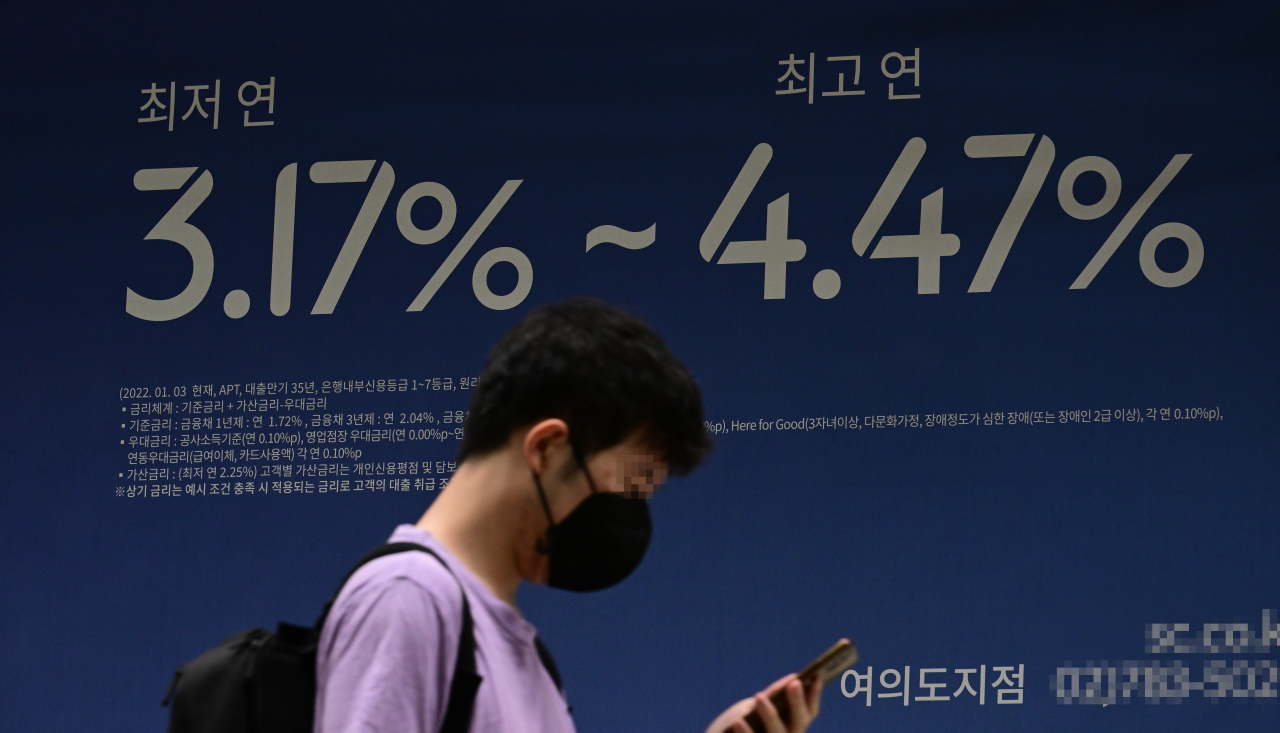[Newsmaker] Dashed dreams: Young Koreans' leveraged investments backfire
By Park Han-naPublished : Oct. 25, 2022 - 16:34

When stock and crypto markets were hot and borrowing costs were cheap, many younger South Koreans, who typically had strong risk appetite but little capital to invest, dabbled in leveraged investing, known as “bittoo” in Korean.
Many of these young investors had dreamed of getting rich quick and retiring young to become a new member of “FIRE tribe” -- the acronym standing for financially independent, retire early.
But many are now suffering, as markets have tanked and interest rates rise.
Among them is Jeong, who works at an IT company. He said he has quit online communities and YouTube where he used to visit daily to gather tips and information about investing.
About 90 million won ($62,700) has been wiped out from his investment in digital coins via Korea-based cryptocurrency exchanges Upbit and Bithumb. Two-thirds of that -- 60 million won -- was not his money, but borrowed from banks and a brokerage house.
“I should’ve quit when I lost 30 million won of my own. But I decided to invest on leverage to recover the principal and ended up losing it all,” he said. “I won’t go anywhere near stocks and coins from now on.”
A 29-year old man surnamed Kim, who started working two years ago, saw four months’ salary erased through stock investment.
The biggest loss came from a leveraged exchange-traded fund on US technology stocks, which plummeted 83.31 percent since he started investing in the product in mid-2021.
“It was time for me to think about investment because my salary almost remains flat and hosing prices hike and I’m reaching the age of getting married,” he said.
The country’s benchmark Kospi has tumbled.
After topping 3296.17 points on Aug. 5 last year, the index shed 32.8 percent to end at 2,213.12 points Friday. Retail investors in their 20s and 30s account for 41 percent of the total number of people investing in Kospi, according to the Korea Securities Depository.
Data shows that more young investors were drawn to the “bittoo” strategy over the past years.
At the end of 2020, there were 319,232 stock investors under the age of 30 who took out securities-related loans from more than three financial institutions. As of June this year, that number has grown 21 percent to stand at 387,021, according to data from the Financial Supervisory Service.
During the same period, other age groups reported an average 5 percent increase, showing the disproportionate popularity of “bittoo” among youth in 2021, when the prices of equities and digital coins soared.
The situation is even worse in the more volatile cryptocurrency markets.
The price of Bitcoin is at 27,720,000 won as of 2 p.m. Tuesday, down 63.5 percent from 75,988,000 won on Nov. 12.
As young traders’ heavy losses from digital coins became a social issue, the South Korean government came up with a debt relief plan for them.
Part of a large bailout program for vulnerable groups, it allows indebted persons under the age of 35 to receive a reduction of up to 50 percent in interest payments, and provides for a debt maturity extension of up to 3 years during which an interest rate of 3.2 percent will apply.
In a similar support measure for indebted youth, the Seoul Bankruptcy Court gives special consideration to debts stemming from investment in stocks and digital coins.
“From July 1, when applying for personal bankruptcy, losses incurred by investing in virtual currency (cryptocurrency) or stocks will not be included in the repayment amount that the debtor will have to repay in the future,” it said.
According to the court, bankruptcy filings by 20-somethings increased from an average of 245 cases per month in the first half of 2022 to 322 cases in July and 315 cases in August. The proportion of people in their 20s was 19.6 percent of the total number of bankruptcy applications. This is a sharp increase from 10.7 percent in 2020.







![[Graphic News] More Koreans say they plan long-distance trips this year](http://res.heraldm.com/phpwas/restmb_idxmake.php?idx=644&simg=/content/image/2024/04/17/20240417050828_0.gif&u=)
![[KH Explains] Hyundai's full hybrid edge to pay off amid slow transition to pure EVs](http://res.heraldm.com/phpwas/restmb_idxmake.php?idx=644&simg=/content/image/2024/04/18/20240418050645_0.jpg&u=20240419100350)






![[From the Scene] Monks, Buddhists hail return of remains of Buddhas](http://res.heraldm.com/phpwas/restmb_idxmake.php?idx=652&simg=/content/image/2024/04/19/20240419050617_0.jpg&u=20240419175937)

![[KH Explains] Hyundai's full hybrid edge to pay off amid slow transition to pure EVs](http://res.heraldm.com/phpwas/restmb_idxmake.php?idx=652&simg=/content/image/2024/04/18/20240418050645_0.jpg&u=20240419100350)

![[Today’s K-pop] Illit drops debut single remix](http://res.heraldm.com/phpwas/restmb_idxmake.php?idx=642&simg=/content/image/2024/04/19/20240419050612_0.jpg&u=)